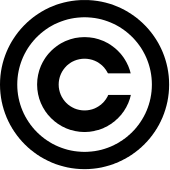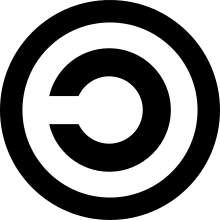Free content
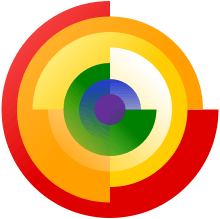
Free content, libre content, or free information, is any kind of functional work, artwork, or other creative content that meets the definition of a free cultural work. A free cultural work is one which has no significant legal restriction on people's freedom:
- to use the content and benefit from using it,
- to study the content and apply what is learned,
- to make and distribute copies of the content,
- to change and improve the content and distribute these derivative works.[1][2]
Although there are a great many different definitions in regular everyday use, free content is legally very similar if not like an identical twin to open content. An analogy is the use of the rival terms free software and open source which describe ideological differences rather than legal ones.[3]
Free content encompasses all works in the public domain and also those copyrighted works whose licenses honor and uphold the freedoms mentioned above. Because copyright law in most countries by default grants copyright holders monopolistic control over their creations, copyright content must be explicitly declared free, usually by the referencing or inclusion of licensing statements from within the work.
Legal matters
Traditional copyright
Copyright is a legal concept, which gives the author or creator of a work legal control over the duplication and public performance of his or her work. In many jurisdictions, this is limited by a time period after which the works then enter the public domain. During the time period of copyright the author's work may only be copied, modified, or publicly performed with the consent of the author, unless the use is a fair use. Traditional copyright control limits the use of the work of the author to those who either pay royalties to the author for usage of the authors content, or limit their use to fair use. Secondly it limits the use of content whose author cannot be found.[4] Finally it creates a perceived barrier between authors by limiting derivative works, such as mashups and collaborative content[5]
Public domain
The public domain is a range of creative works whose copyright has expired, or was never established; as well as ideas and facts[nb 1] which are ineligible for copyright. A public domain work is a work whose author has either relinquished to the public, or no longer can claim control over, the distribution and usage of the work. As such any person may manipulate, distribute, or otherwise utilize the work, without legal ramifications. A work in the public domain or released under a permissive licence may be referred to as "copycenter".[6]
Copyleft
Copyleft is a play on the word copyright and describes the practice of using copyright law to remove restrictions on distributing copies and modified versions of a work.[7] The aim of copyleft is to use the legal framework of copyright to enable non-author parties to be able to reuse and, in many licensing schemes, modify content that is created by an author. Unlike works in the public domain, the author still maintains copyright over the material, however the author has granted a non-exclusive license to any person to distribute, and often modify, the work. Copyleft licenses require that any derivative works be distributed under the same terms, and that the original copyright notices be maintained. A symbol commonly associated with copyleft is a reversal of the copyright symbol, facing the other way; the opening of the C points left rather than right. Unlike the copyright symbol, the copyleft symbol does not have a codified meaning.[8]

Copyfree
Copyfree as defined by The Copyfree Initiative is a type of permissive copyright license that allows the freedoms to copy, use, modify, and distribute a work.[9] Copyfree licenses are all free/libre/open licenses. However, some free/libre/open licenses include certain restrictions and requirements which make them non-Copyfree. For example, copyleft licensing generally requires that all derivative works be distributed under the terms of the same license.
Copyfree licenses include the Simplified BSD license, the Open Works license, and others, but not the GNU GPL or other copyleft licenses. While all copyfree licenses are permissive licenses, not all permissive licenses are copyfree. The Apache License 2.0 (as well as previous versions of this license) is an example of a non-copyfree permissive license.[10] Another notable example is the Creative Commons Attribution 3.0 license, which is also incompliant with the Copyfree Standard Definition.
The Creative Commons CC0 public domain dedication is also considered to be copyfree.[11]
Usage
Projects that provide free content exist in several areas of interest, such as software, academic literature, general literature, music, images, video, and engineering.
Technology has reduced the cost of publication and reduced the entry barrier sufficiently to allow for the production of widely disseminated materials by individuals or small groups. Projects to provide free literature and multimedia content have become increasingly prominent owing to the ease of dissemination of materials that is associated with the development of computer technology. Such dissemination may have been too costly prior to these technological developments.
Media
In media, which includes textual, audio, and visual content, free licensing schemes such as some of the licenses made by Creative Commons have allowed for the dissemination of works under a clear set of legal permissions. Not all of the Creative Commons’ licenses are entirely free: their permissions may range from very liberal general redistribution and modification of the work to a more restrictive redistribution-only licensing. Since February 2008, Creative Commons licenses which are entirely free carry a badge indicating that they are "approved for free cultural works".[12] Repositories exist which exclusively feature free material provide content such as photographs, clip art, music,[13] and literature,.[14]
While extensive reuse of free content from one website in another website is legal, it is usually not sensible because of the duplicate content problem. Wikipedia is amongst the most well known databases of user uploaded free content on the web. While the vast majority of content on Wikipedia is free content, some copyrighted material is hosted under Fair-use criteria.
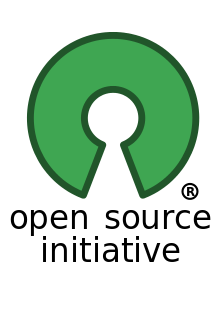
Software
Free software, which is often also open source software, is a maturing technology with major companies utilising free software to provide both services and technology to both end users and technical consumers. The ease of dissemination has allowed for increased modularity, which allows for smaller groups to contribute to projects as well as simplifying collaboration.
Open source development models have been classified as having a similar peer-recognition and collaborative benefit incentives that are typified by more classical fields such as scientific research, with the social structures that result from this incentive model decreasing production cost.[15]
Given sufficient interest in a software component, by using peer-to-peer distribution methods, distribution costs of software may be reduced, removing the burden of infrastructure maintenance from developers. As distribution resources are simultaneously provided by consumers, these software distribution models are scalable, that is the method is feasible regardless of the number of consumers. In some cases, free software vendors may use peer-to-peer technology as a method of dissemination.[16]
In general, project hosting and code distribution is not a problem for the most of free projects as a number of providers offer them these services for free.
Engineering and technology
Free content principles have been translated into fields such as engineering, where designs and engineering knowledge can be readily shared and duplicated, in order to reduce overheads associated with project development. Open design principles can be applied in engineering and technological applications, with projects in mobile telephony, small-scale manufacture,[17] the automotive industry,[18][19] and even agricultural areas.[20]
Technologies such as distributed manufacturing can allow computer-aided manufacturing and computer-aided design techniques to be able to develop small-scale production of components for the development of new, or repair of existing, devices. Rapid fabrication technologies underpin these developments, which allow end users of technology to be able to construct devices from pre-existing blueprints, using software and manufacturing hardware to convert information into physical objects.
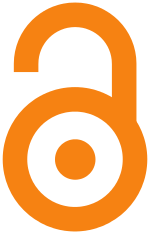
Academia
In academic work, the majority of works are not free, although the percentage of works that are open access is growing rapidly. Authors may see open access publishing as a method of expanding the audience that is able to access their work to allow for greater impact of the publication, or may support it for ideological reasons.[21][22][23] Open access publishers such as the Public Library of Science and Biomed Central provide capacity for review and publishing of free works; though such publications are currently more common in science than humanities. Some universities, such as the Massachusetts Institute of Technology (MIT), have adopted open access publishing by default by introducing mandates.[24] In traditional journals, alternatives such as delayed free publications or charging researchers for open access publishing are occasionally used.[25][26] Some funding agencies, such as the National Institutes of Health, require academic work to be published in the public domain as a grant requirement.[27][28] Open content publication has been seen as a method of reducing costs associated with information retrieval in research, as universities typically pay to subscribe for access to content that is published through traditional means[29][30][31] whilst improving journal quality by discouraging the submission of research articles of reduced quality.[31]
Subscriptions for non-free content journals may be expensive for universities to purchase, though the article are written and peer-reviewed by academics themselves at no cost to the publisher. This has led to disputes between publishers and some universities over subscription costs, such as the one which occurred between the University of California and the Nature Publishing Group.[32]
For teaching purposes, some universities, including MIT, provide freely available course content, such as lecture notes, video resources and tutorials. This content is distributed via Internet resources to the general public. Publication of such resources may be either by a formal institution-wide program,[33] or alternately via informal content provided by individual academics or departments.
Governance
Under 17 U.S.C. § 105, works of the US government are not eligible for copyright. This has enabled their usage in the public domain, and has led to profit in the private sector, for example by Garmin, which is based on free NASA's GPS (there are others, but only recently, such as the fully functional Russian GLONASS), and USGS map data.
The rise over the past decade of the Internet has made it feasible to distribute otherwise inaccessible government documentation directly to citizens from any location at minimal cost. This allows information on lawmaking, local and state government to be analysed by a government's constituents. Although previously information has been in the form of media releases for public relations purposes, documentation that may be of use to citizens and businesses has, in some jurisdictions, been mandated to be released by default.[34] This is in contrast to laws such as the freedom of information act, or their local equivalent, which may make documentation available only on request, rather than mandate explicit publication. According to the Journal of Public Administration, such a stance has been cited as an aid to the reduction in complexity associated with government processes, as well as aiding a reduction in corruption.[35]
See also
- Content (media)
- Definition of Free Cultural Works
- Free and open source software
- Free culture movement
- Free software movement
- Freedom of information
- Libre knowledge
- Open Content Alliance
- Open publishing
- Open-source hardware
- Permissive free software licence
- Project Gutenberg
Notes
References
- ↑ Erik Möller, e.a. (2008). "Definition of Free Cultural Works". 1.1. freedomdefined.org. Retrieved 2015-04-20.
- ↑ Stallman, Richard (November 13, 2008). "Free Software and Free Manuals". Free Software Foundation. Retrieved March 22, 2009.
- ↑ Stallman, Richard. "Why Open Source misses the point of Free Software". Free Software Foundation.
- ↑ "The Importance of Orphan Works Legislation".
- ↑ Ben Depoorter; Francesco Parisi (2002). "Fair use and copyright protection: a price theory explanation". International Review of Law and Economics 21 (4): 453. doi:10.1016/S0144-8188#01)00071-0.
- ↑ Raymond, Eric S.. "Copycenter". The Jargon File. Retrieved August 9, 2008.
- ↑ Dusollier, S (2003). "Open source and copyleft. Authorship reconsidered?". Columbia journal of Law and the Arts 26 (296).
- ↑ Hall, G. Brent (2008). Open Source Approaches in Spatial Data Handling. Springer. p. 29. ISBN 3-540-74830-X. Retrieved March 22, 2009.
- ↑ "Copyfree Standard Definition". Copyfree Initiative. Retrieved 2011-09-27.
- ↑ "Copyfree: standard > rejected". Copyfree Initiative. Retrieved 2014-10-26.
Section 4, subsections 2 and 4 of the Apache License 2.0 violate point 3. Free Modification and Derivation of the Copyfree Standard Definition by specifying conditions (beyond licensing) that must apply to modifications.
- ↑ Anonymous. Copyfree Licenses. Copyfree. . URL:http://copyfree.org/licenses/. Accessed: 2013-04-29. (Archived by WebCite® at http://www.webcitation.org/6GFsj0kGe)
- ↑ Linksvayer, Mike (February 20, 2008). "Approved for Free Cultural Works". Creative Commons. Retrieved March 22, 2009.
- ↑ "iRate Radio". SourceForge.net. Retrieved March 22, 2009.
- ↑ "Gutenberg:No Cost or Freedom?". Project Gutenberg. April 23, 2007. Retrieved March 22, 2009.
- ↑ Mustonen, Mikko. "Copyleft – the economics of Linux and other open source software" (PDF). Discussion Paper No. 493. Department of Economics, University of Helsinki. Retrieved March 22, 2009.
- ↑ Pawlak, Michel; Bryce, Ciarán; Laurière, Stéphane (May 29, 2008). "The Practice of Free and Open Source Software Processes" (PDF). Rapport de recherche. inria-00274193, version 2 (Institut national de recherche en informatique et en automatique (INRIA)). N° 6519 (April 2008). ISSN 0249-6399. Retrieved March 22, 2009.
- ↑ Hendry, Andrew (March 4, 2008). "RepRap: An open-source 3D printer for the masses". Computerworld Australia. The Industry Standard. Retrieved March 22, 2009.
- ↑ Honsig, Markus (January 25, 2006). "The most open of all cars". Technology Review (in German). Heinz Heise. Retrieved March 22, 2009.
- ↑ "Australian drive for green commuter cars". Retrieved 100613. Check date values in:
|accessdate=(help) - ↑ Stewart, Jr., C. Neal (December 2005). "Open-source Agriculture" (PDF). ISB News Report. Information Systems for Biotechnology (ISB). Retrieved March 22, 2009.
- ↑ Alma Swan and Sheridan Brown (May 2005). "Open access self-archiving: An author study" (PDF). Key Perspectives Limited.
- ↑ Andrew, Theo (October 30, 2003). "Trends in Self-Posting of Research Material Online by Academic Staff". Ariadne (UKOLN) (37). ISSN 1361-3200. Retrieved March 22, 2009.
- ↑ Key Perspectives. "JISC/OSI Journal Authors Survey Report" (PDF). Joint Information Systems Committee (JISC). Retrieved March 22, 2009.
- ↑ "MIT faculty open access to their scholarly articles". MIT news. 20 March 2009.
- ↑ "Policy of the Society for General Microbiology towards author self-archiving on PubMed Central and institutional and other repositories". Retrieved April 10, 2009.
- ↑ "OnlineOpen". Retrieved April 10, 2009.
- ↑ Haslam, Maryanne. "NHMRC Partnership Projects – Funding Policy" (PDF). National Health and Medical Research Council (NHMRC). Retrieved March 22, 2009.
- ↑ "Policy on Enhancing Public Access to Archived Publications Resulting from NIH-Funded Research". Retrieved July 12, 2009.
- ↑ Mayor, Susan (April 19, 2003). "Libraries face higher costs for academic journals". BMJ: British Medical Journal (BMJ Group) 326 (7394): 840. PMC 1125769. Retrieved March 22, 2009.
- ↑ "AMS Journal price survey". Retrieved May 23, 2009.
- ↑ 31.0 31.1 "Costs and business models in scientific research publishing: A report commissioned by the Wellcome Trust" (PDF). Retrieved May 23, 2009.
- ↑ Hawkes, Nigel (November 10, 2003). "Boycott 'greedy' journal publishers, say scientists". The Times (London).
- ↑ "About OpenCourseWare". Retrieved April 10, 2009.
- ↑ "Motion on Notice: Open Data, Open Standards and Open Source" (PDF)./
- ↑ Cho, Yong Hyo; Choi, Byung-Dae (10 January 2005). "E-Government to Combat Corruption: The Case of Seoul Metropolitan Government". International Journal of Public Administration 27: 719–735. doi:10.1081/PAD-200029114.
Further reading
- D. Atkins, J. S. Brown, A. L. Hammond (February 2007). A Review of the Open Educational Resources (OER) Movement: Achievements, Challenges, and New Opportunities. (PDF). Report to The William and Flora Hewlett Foundation.
- OECD – Organisation for Economic Co-operation and Development: Giving Knowledge for free – The Emergence of Open Educational Resources. 2007, ISBN 92-64-03174-X.
External links
- Definition of Free Cultural Works – A definition of "free content" or "free cultural works" similar to the free software definition
- "Episodes of collective invention" (PDF) (Peter B. Meyer; August 4, 2003) – article on several U.S.-oriented historical examples of free content in technology
- Open Knowledge Definition – project under the aegis of the Open Knowledge Foundation which provides a definition of "open" suitable for content and data
- What is free content? on WikiEducator
| ||||||||||||||||||||||||||
